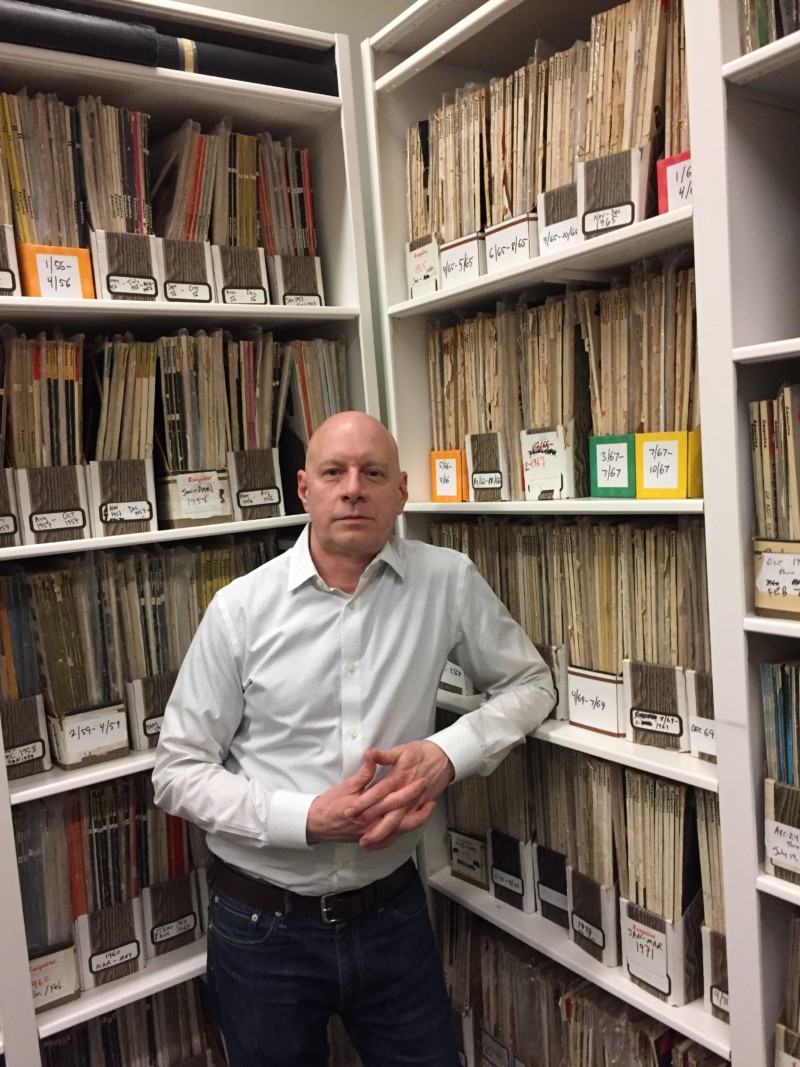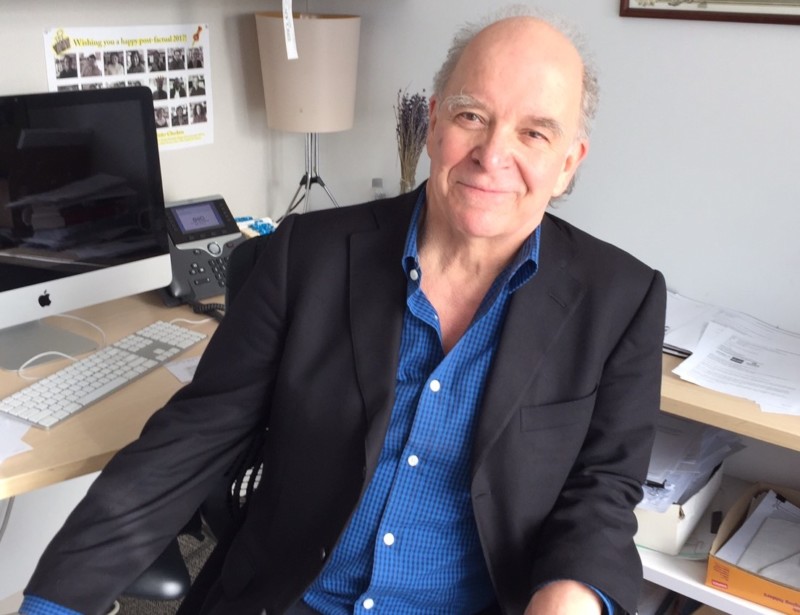Sign up for The Media Today, CJR’s daily newsletter.
I was among nearly 40 casualties when, in April of last year, American Media Inc., owners of The National Enquirer and Star, purchased Us Weekly from Wenner Media. As the magazine’s longtime research chief, it was my job to untangle facts from falsehoods—so I didn’t expect that AMI, a company infamous for distorting the truth, would spare my staff or me. The general public may not see the line that separates the former Us Weekly from the down-market tabloids David Pecker, AMI’s chairman and CEO, publishes, but there is a line—and it’s bold.
Us Weekly maintained a fact-checking department more robust than many of our country’s most respected publications. The print magazine had two staffers, myself and a deputy, and a large team of freelancers (anything from four to seven checkers depending on where we were in the closing cycle). More surprisingly, the magazine’s online iteration employed two staff research editors, three freelance fact-checkers, and a weekend checker. These days, the digital properties of print magazines usually rely on writers and editors to check their own stories.
Related: Magazines find there’s little time to fact-check online
In a telephone interview with CJR, Michael Steele, the former editor in chief of Us Weekly who headed New York magazine’s fact-checking department in the late 1990s, explains why it was particularly crucial for Us Weekly’s website to have a dedicated fact-checker: “A lot of our stories had a short shelf life. A few days later, there was less interest in them. For that reason, the tempo in which we published was necessarily very fast.”
It was, perhaps, the irony of all ironies: In the age of post-truth and alternative facts, America’s second-best-selling gossip magazine made accuracy a top priority.
The swift pace made writers more prone to error, which risked sinking the integrity of the editorial, Steele says. “Even small mistakes, like copy errors and misspellings, undermine the reader’s confidence,” he says. “Getting as many facts right as possible helps bolster the authority of the journalism.” To sustain rapidfire publishing, it was more effective to entrust designated checkers, as opposed to editors and writers, with sussing out mistakes: “If I wanted the writer and editor to move quickly onto the next story, it was a much more efficient system to rely on checkers.” It was, perhaps, the irony of all ironies: In the age of post-truth and alternative facts, America’s second-best-selling gossip magazine made accuracy a top priority.
Today, online operations often forego fact-checkers, and print publications have seen a steady decline in fact-checking resources over the past decade. These are troubling trends. But not everyone sees it that way. Some argue that the internet has radically improved the quality and speed of fact-checking, making robust teams of researchers obsolete.
I interview eight research editors to assess the current state of magazine fact-checking from multiple perspectives—and to give voice to the often invisible men and women tasked with maintaining the integrity of some of the country’s most important publications.
In 1993, Cathy Garrard, the research director of Hearst legacy brands Redbook and Woman’s Day, moved to New York City to start a career in journalism. “My first job out of college was at Glamour magazine,” she recalls. “For a girl from Kansas, that’s like Cinderella at the ball.” Like many of us who end up in research, Garrard quickly realized freelance writing wouldn’t pay the bills, so she took a fact-checking gig at the now-defunct Total TV. “In those days, you used Leonard Maltin’s Movie Guide. There was no IMDb, no Wikipedia,” she says.
Garrard, who spent nearly a decade at Condé Nast’s Self, where she worked on stories that won National Magazine Awards, says fact-checking was laborious and time-consuming back then: “It was a lot more digging and actual reporting, as opposed to just verifying facts.” It required making telephone calls—and waiting for answers—as well as locating and referencing actual books. (To think of it!) Where you’d once have to wait a week to obtain a new study, today you can have it in minutes. “The pace of fact-checking is lightning speed,” she says. “Access to information has improved exponentially.”

Cathy Garrard, research director of Redbook and Woman’s Day (Photo Courtesy of Cathy Garrard)
Garrard thinks Hearst’s decision to consolidate three titles—Redbook, Woman’s Day, and Good Housekeeping—under the Lifestyle Group to cut costs and pool resources made sense. “It’s a very forward-thinking strategy,” she says. “There used to be a lot more luxuriating in the world of fact-checking, but you also needed a standing army of checkers because stories took longer to check and were often crashed into the issue at the 11th hour. You would only get three or four stories to work on for the entire issue. Now, I can check two or three articles in a single day.”
Esquire’s Research Editor Robert Scheffler shares Garrard’s view that the internet has made massive fact-checking squads obsolete. “We’d be lost with seven checkers today. We wouldn’t have anything to do,” he says. Scheffler came to New York City in the mid-1990s, determined to make it as a musician. For a steady paycheck, a friend got him a freelance fact-checking gig at the storied men’s magazine. He’s now been there for two decades, including 16 years as head of its research department. Scheffler remembers having to share a single computer and Nexis account with seven other people in the late ’90s. “It’s amazing to think about that,” he says. “When I started out, you got a phone and roll of quarters,” he jokes. Twice a week, he and his fellow checkers would scavenge the local bookstore to chase down errant facts: “We’d pretend we were buying books, but were only using them as references.”
Related: The New Yorker‘s chief fact-checker on how to get things right in the era of ‘post-truth’
Today, he runs the department with two research associates and the odd freelancer. “We lost a lot of people when information got easier to access,” he says. But unlike Garrard, Scheffler expresses some misgivings about sharing resources across several titles. “But we’ll deal with it if it happens,” he says. In his view, the danger of consolidation is twofold: the possible homogenization of content, and different sets of fact-checking standards. “We wouldn’t want anyone to say we were being too slow when we were just being thorough,” he explains.
There used to be a lot more luxuriating in the world of fact-checking, but you also needed a standing army of checkers because stories took longer to check and were often crashed into the issue at the 11th hour.”
If the merging of resources forces him to relinquish another staffer, Scheffler says, he’ll have to strategize to manage the loss: “We’ll have to think about what we can shave off of our purview.” After all, he and his team have done it before. When it most recently downsized, they cut the tedious task of checking the dense pages of fashion credits in the back of the book by shifting that responsibility onto the fashion team.
Ceasing to check soft pages or relaxing the process of checking all pages are two ways magazines have dealt with staff reductions in print. A veteran fact-checker, who has held positions at popular glossies since 2001 and asked to remain anonymous, says at the weekly where she was most recently employed, checkers only had time to “check the basics”—hard facts like names or titles. “We couldn’t do a full check on the entire magazine with the staff we had, so they ended up cutting back on what our responsibilities were,” she says.

Esquire Research Editor Robert Scheffler (Photo Courtesy Robert Scheffler)
Most of the checkers interviewed by CJR agree that less manpower means less-than-thorough fact-checking practices, but some, like Scheffler, point out that the speed with which fact-checkers now gather information has also engendered some sloppy habits. He finds, sometimes, that newly minted journalism graduates “haven’t gone the extra mile” when tracking down birth, marriage, or divorce dates, for example. If it’s been printed enough, he says, they accept it as fact.
A longtime research editor for distinguished publications, who asked to remain anonymous, agrees: “In the past, if someone said they graduated from Harvard College, we had to call the Admissions Office at Harvard and get confirmation that this person did, in fact, go there and did, in fact, graduate. I think that level of interrogation doesn’t happen anymore. A checker will go online and see that someone said in their bio or on their LinkedIn page that they went to Harvard and that’s what they’ll rely on.”
That level of interrogation doesn’t happen anymore. A checker will go online and see that someone said in their bio or on their LinkedIn page that they went to Harvard and that’s what they’ll rely on.”
Lori Segal, the research director of Condé Nast’s Allure and Teen Vogue, however, doesn’t feel her work has suffered since the advent of digital. She is just as thorough, she says, and more efficient. Condé Nast’s restructuring last year didn’t challenge her high standards, either. Under the newly formed Content Integrity Group, some staffers are dedicated to specific titles while others float between several. In her view, the reorganization has provided her with more resources, not fewer. “The floaters are resources that weren’t available before,” she says. “While other publications might have shrunk or gone freelance, we still have a strong staff.”
Segal’s team, which includes three research managers, checks the print and online versions of the magazines she oversees, as well as video, branded extensions, and partnerships. That’s a tall order: Although the print edition of Teen Vogue folded last year, the online property publishes between 30 and 35 posts a day, and Allure, a monthly, publishes between 25 and 35 pieces a day online.
Online, the volume of copy and the speed at which editors expect it to be published pose tough challenges for fact-checking. Unlike most publications, which don’t vet digital content, Segal and her team check the websites of Allure and Teen Vogue, but in a different way than for print. She compares it to triage: “You look for things that are crucial to the story. You want every detail to be right, but the focus is on legally problematic and sensitive information and getting the basics right.” A lot of the checking, she explains, entails evaluating the quality of primary and secondary sources, which is easier to do online because the copy is annotated with hyperlinks. If she can’t track down a fact, she’ll eliminate it. “You have the time for stubborn facts when hunting something down for print because you have the luxury of having a couple days with a story. For online stories, my go-to is: When in doubt, cut it out.”

Peter Canby, head of fact-checking at The New Yorker (Photo Courtesy Peter Canby)
Condé Nast’s legendary New Yorker fact-checking department, which includes a staff of 17, relies on a similar system for its online articles. “We have a small fact-checking department [of four] run by two deputies online,” says Peter Canby, who’s overseen the department on and off since the mid ’90s. “We check new writers and pieces that are more sensitive than others.” Generally, stories get what he calls a “newspaper-level fact-check,” where editors and copy editors vet the pieces they themselves edit, and “a certain percentage get a full fact-check.” Every two weeks, Canby rotates a print checker into the mix to ensure the checking standards for online and print are in sync.
ICYMI: How Tom Tryniski digitized nearly 50 million pages of newspapers in his living room
Pat Singer, research director of Condé Nast’s Glamour and former fact-checking chief at Vanity Fair and Self, vets the magazine with a team of six—a mix of staffers and freelancers— and “handles digital material on an as-needed basis,” she writes in an email. “For breaking news and controversies,” she notes, “we activate our ‘fast-twitch’ checking muscles, while longer-form pieces would need planning and forethought, as for print.” Hearst manages online content in a similar way.
Segal likens publishing copy without checkers to “going into a snowstorm without your coat and hat. You can do it for a little bit, but you’re going to eventually get frostbite.”
“From the inception of digital, print and digital were kept separate,” says Scheffler at Esquire. “Over the years, they [upper management] waxed and waned about whether to keep them together. But as it stands, they are literally on another floor.” His team is tasked with the occasional sensitive feature, but generally editors “quiz their own writers” to check copy. As someone who has often written for the website of Hearst’s Elle, I can attest to the thoroughness of the editors who have grilled me on facts they couldn’t verify independently. But, as someone who’s been a checker for nearly a decade and a half, I’m not sure relying on editors to vet copy is enough.
For one, editors and writers are too mired in the story to interrogate the copy with a sufficient level of distance and rigor. A longtime research editor puts it this way: “You need someone who’s impartial, and who’s not invested in telling the good story, because by necessity the editor and writer want to tell a sexy, compelling story.”

Lori Segal, research director of Allure and Teen Vogue (Photo Courtesy Lori Segal)
Segal likens publishing copy without checkers to “going into a snowstorm without your coat and hat. You can do it for a little bit, but you’re going to eventually get frostbite.” And getting frostbite could mean a multimillion-dollar lawsuit. As Scheffler puts it: “The best litigation preventative is fact-checking.” A former research chief who currently works at a high-end culture magazine agrees, saying that hiring online checkers has a “long-term economic value” that “the suits” don’t see. “Fact-checkers are insurance. They maintain the integrity of the publication. That’s what people are paying for—a trusted source. If you lose that, you lose your readers.”
But not everyone is sounding the alarm, Garrard says: “If you get it wrong on the Web, you can change it. It doesn’t have to be permanent.” Noting that newspapers don’t rely on fact-checkers to vet content but rather run daily corrections, Garrard thinks it makes sense that digital, which moves at an even faster clip than newspapers, would adopt a similar model. She emphasizes, however, that “in an ideal world, every piece of content would be thoroughly vetted for accuracy before being introduced to any readers.”
“Unfortunately, the online economy doesn’t afford a lot of resources,” Us Weekly’s former Editor in Chief Steele says. “But if consumers start to expect and demand quality, then the market will support it.”
With industry-wide dips in print and ad sales and circulation, as well as the persistent struggle to monetize digital content, it’s understandable—essential, even—for publishers to rethink their business models.
But it’s a bad time in history to skimp on fact-checking—and not just because we have a president who will milk every opportunity to disparage the press as “fake news.”
But it’s a bad time in history to skimp on fact-checking—and not just because we have a president who will milk every opportunity to disparage the press as “fake news.” The public, including the subjects of high-profile stories, can easily call out magazines’ mistakes to their followers on social media, potentially sullying a brand’s reputation. Slimmer editorial staffs and the higher pace at which content is published both raise publications’ vulnerability to error.
In the meantime, some media insiders think third-party fact-checking organizations such as Snopes, PolitiFact, and Pundifact are the answer to scaled-down—or nonexistent—research departments. I, however, find little solace in nonpartisan clearinghouses for facts. How many readers actually visit these sites to corroborate what they read? Very few, I imagine.
When AMI’s slick duo Dylan Howard, editor in chief of The National Enquirer, and James Heidenry, the former editor in chief of Star, came to Wenner Media to interview me for the job I’d held for seven years and discovered how robust our online fact-checking staff was, Howard boasted: “I’ve run three digital properties for years without a single fact-checker.” When they flipped through my fact-checking guidelines, they scoffed at how strict my rules were: “You can’t even rearrange quotes?” Howard asked. They both laughed. They did, however, concede one point: After reading that my guidelines prohibited use of Star as a legitimate source without verifiable court documents or video footage, Howard said with a chuckle: “Fair enough.”
When CJR reached out to AMI for comment regarding my recollection of our exchange, the company provided the following statement: “We would never address any communication directly between us or a prospective employee as we respect the privacy of such conversations. As far as any comments the author seems to recall Mr. Howard making during the author’s employment interview, he emphatically denies making such comments.”
In the end, AMI took only one research editor from our team to fact-check the entire Us Magazine website, which publishes about 60 posts a day. That is an impossible, and futile, endeavor. Less than four months later, they let him go, and he’s not been replaced.
Trending: Contracts of silence
Has America ever needed a media defender more than now? Help us by joining CJR today.



